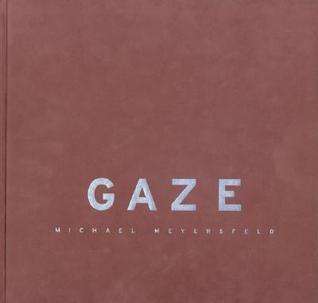
''Gaze'' - Michael Meyersfeld
Check my rate
| Main centres: | 1-3 business days |
| Regional areas: | 3-4 business days |
| Remote areas: | 3-5 business days |

| Main centres: | 1-3 business days |
| Regional areas: | 3-4 business days |
| Remote areas: | 3-5 business days |
There is precious quality to Gaze, an expectation that you take time and care with its soft cloth cover, its large format, its spacious layout and its well-considered photographic portrait compositions set against utterly plain studio backgrounds of solid colour. And in many ways the book satisfies all of these expectations. In addition to the photographs, the book also includes a 'foreword' by Justice Edwin Cameron, a short essay by Mark Gevisser entitled 'Observation', and an editor's note by Daniel Somerville.
In his Foreword, Justice Edwin Cameron suggests that "Meyersfeld's achievement is to create and affirm dignity and beauty in each of his portraits. By participating in his enterprise, his subjects assert that dignity and beauty as gays and lesbians, and claim its political implications".
By allowing subjects to choose their self-image, Meyersfeld has collated a range of often-conflicting identities that certainly reflect Cameron's descriptor. An exploration of sexual orientation doesn't have to assume an expression of nudity, and while many of those who sat for Meyersfeld chose to variously reveal their bodies, there are an equal number of sitters who've chosen the fantasies and realities offered by clothing. This is but one variation that undoubtedly constitutes the visual strength of the book.
Mark Gevisser's short essay, 'Observation', is an excellent exploration of identity, the shifts and slippages between gay and straight, and the difference between what we differently feel on the inside and outside. As Gevisser rightly points out, the "true value of Michael Meyersfeld's project is not that it strikes a blow for the human rights of gay people - a task better suited to the Constitutional Court, or to media vehicles consumed by the masses, but that it challenges all of us who participate in it and who read it, gay or straight, to consider again what our gazes are; what we mean, or think we mean, when we say 'gay' or 'straight' or 'fag' or 'queen' or 'dyke'".
What begins to emerge in reading the texts that precede the photographs is a tension between art and advocacy, and in this regard Cameron and Gevisser offer quite different perspectives on the photographs and the book. Meyersfeld is the proverbial outsider. While this view certainly isn't voyeuristic, there is an overall sense that this is the vision of a novice. Sometimes I wonder whether the book lacks a strong enough initial concept or perspective that could have driven the entire project in more interesting directions.
Perhaps this would have been better served by a more thought through relationship between photograph and text. This relationship is critical when these two media collide in book form. In Gaze there is an awkward arrangement between photographs that overwhelmingly celebrate self-identity and text that repeatedly logs homophobia and caricatures questions of identity. Starting off a celebration of identity with a bit of bigotry from Robert Mugabe seems out of place, and is testament to the awkward intentions of the book.
It's not clear to what extent the subjects chose the texts that accompany their photographs, but Daniel Somerville could have shown more sensitivity to the photographs and Meyersfeld's intentions in compiling the quotes, slogans and information that accompany the images. They don't do the photographs justice, and certainly don't add another perspective to the book as Somerville himself claims.
I suppose I'm left with an abiding question: who is the target market for this book? Somerville suggests that the "book became not just an educative tool for straight people, but also a challenge to the community it observes". I think it somehow slips between these stated audiences. It is a superb production of the highest quality but it hasn't resolved for itself that old, important and thorny question of the relationship between art and advocacy. If this had been better considered, a stronger message would have emerged and loyal audience would have become more apparent. (Rory Bester)